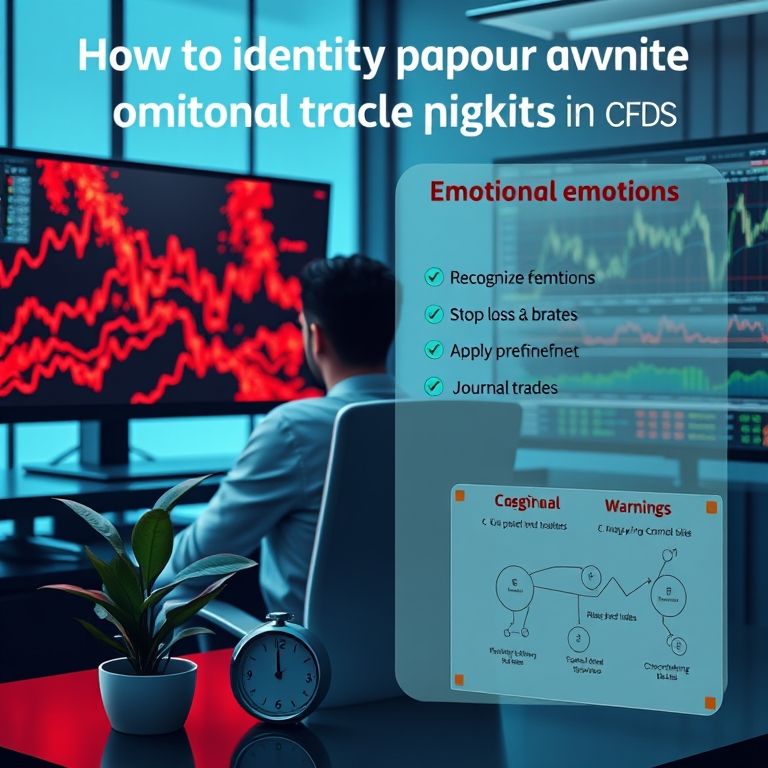How to identify and avoid emotional trading in CFD markets
How to Identify and Avoid Emotional Trading in CFD Markets
Introduction
You wake up, open your CFD dashboard, and across forex, stocks, crypto, indices, commodities, and options the markets surge and dip in a heartbeat. In that rush, emotions—fear, greed, FOMO—can hijack your plan. This piece digs into the psychology behind emotional trading, shares practical steps you can actually use, and casts an eye on how new tech in web3, DeFi, and AI may shape safer, smarter trading. Think of it as a toolkit for staying level headed while navigating multiple asset classes.

Understanding the emotional traps
Emotions often show up as patterns: chasing quick winners after a small win, doubling down after a loss, or trading on headlines rather than data. A trader I spoke with started adding risk after a midweek crypto spike, convinced the move was “the breakout.” The result wasn’t a blockbuster gain but a quick slide as volatility swung the other way. The lesson: mood can tilt judgment faster than market data. Loss aversion, overconfidence after a string of small wins, and the fear of missing out are common culprits that tilt decisions away from your pre‑planned rules.
Practical signals that emotion is driving your trades
- You drift from a written plan: bigger positions, looser stop losses, or skipping risk checks because market mood feels urgent.
- You trade more often after losses, hoping to “get it back” and ending up in a self‑fulfilling downtrend.
- Your risk metrics stop matching reality: you accept higher-than-acceptable drawdown, or you ignore warnings from charts and alerts.
- You react to noise rather than to a solid setup: a single headline or a rapid move in one asset nudges you into action across others.
Tools and habits to regain control
- Pre-trade checklist: define your goal, set risk per trade (a common rule is 1–2% of your account per trade), pick a strict stop, and decide a maximum daily loss.
- Position sizing discipline: use fixed fractional sizing or a fixed risk dollar amount instead of chasing bigger bets after wins or losses.
- Trade journaling: note why you entered, what the plan was, and how you felt at the moment. Regular reviews reveal recurring emotional patterns.
- Automation and alerts: set guardrails with limit orders, trailing stops, and risk alerts so steady processes carry more weight than gut feeling.
- Environmental control: avoid high‑stress hours, sleep well, and take breaks to clear your mind—emotion tends to spike when you’re tired or under pressure.
- Practice in a simulator: build confidence with synthetic trades before touching real money, especially across multiple assets.
Leverage and risk across CFD asset classes
CFD leverage magnifies both gains and losses, which can amplify emotional reactions. Managing this is crucial across asset types:
- Forex CFDs and major indices often come with higher regulatory leverage; adjust to a level you can emotionally endure.
- Stocks, commodities, and crypto CFDs vary by broker and jurisdiction; know your platform’s limits and apply conservative sizing.
- Across all assets, the guiding principle is risk control, not chasing bigger bets. A disciplined approach—risk 1–2% per trade, clear stop levels, and predefined max daily risk—helps keep emotions in check.
DeFi, web3, and the evolving landscape
Web3 brings new ways to think about risk and automation. Decentralized derivatives and synthetic assets promise permissionless access across markets, but come with their own emotional traps:
- Smart contracts and liquidity risks can create fast, unseen losses if you don’t understand the protocol’s mechanics.
- Decentralized trading tools require careful security practices, audit trails, and robust risk budgets; the absence of traditional guardrails can tempt overconfidence.
- Still, the blend of transparent rules and programmable risk limits offers a chance to build systems that reduce impulse trading—when used with proper risk controls and due diligence.
Future trends: AI, smart contracts, and smarter discipline
AI‑driven signals, automated hedging, and smart contract workflows may help traders stick to plans and cut emotion out of routine decisions. Expect more programmable risk gates, backtesting across diverse assets, and sentiment‑aware tools that flag when you’re deviating from your plan. The promise: faster, smarter analysis paired with disciplined execution. A simple, catchy reminder for traders could be: “Trade calm, win steady.” Another slogan: “Emotions out, strategy in.”
Reliability tips and practical takeaways
- Build a personal playbook that covers every asset you trade: entry criteria, stop placement, and risk limits.
- Use a layered approach to analysis: combine chart patterns with momentum indicators and volume confirmation.
- Keep your execution clean: avoid overtrading and ghost trades born from restless energy.
- Use education as a hedge: regular reviews, updated risk metrics, and simulated drills keep you sharp without risking real capital.
- Remember the big picture: technology evolves, but discipline remains your best edge.
Closing thought
As CFD markets diversify—forex, stock, crypto, indices, options, and commodities—the ability to identify and suppress emotional trading becomes a core survival skill. Smart use of charts, risk controls, and automation, plus thoughtful engagement with DeFi and AI tools, can help you trade with more consistency. A steady mind paired with steady methods isn’t just safer—it’s a competitive advantage. Trade with confidence, not impulse, and let your plan lead the way. Trade smarter, stay grounded, and let the data, not the drama, steer your journey.
YOU MAY ALSO LIKE




